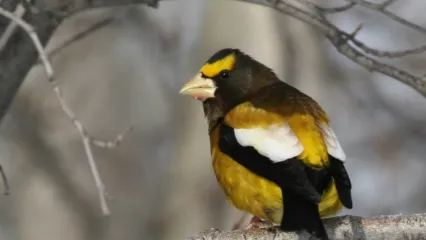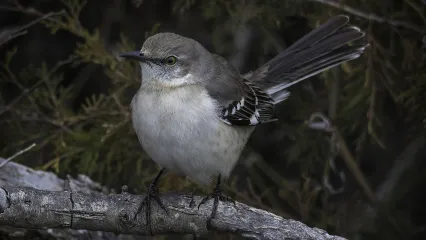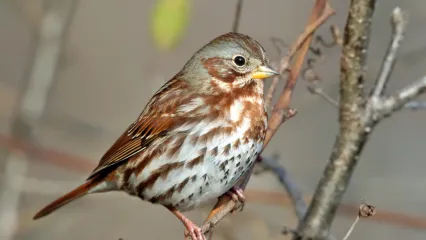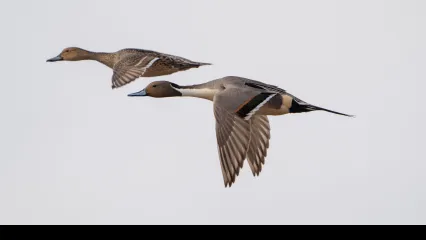
Description
This bird is larger than a house sparrow, with a massive cone-shaped, pale bill and black wings with white patches. Males have a dark brown head that gradually fades to golden-yellow on the belly and lower back. It has a black crown and bright yellow eyebrows and forehead band. Females have a grayish-brown upper back and head with yellow-tinged shoulders, breast, belly and sides. Evening grosbeaks may be confused with the American goldfinch, which is much smaller, has a smaller bill, and smaller white wing bars.
Size
Approximately 6.3 to 7.1 inches in length. Wingspan of 11.8 to 14.2 inches.
Habitat
These birds can be found in deciduous and coniferous woods, parks and gardens. Evening grosbeaks can occur statewide. They are rare or absent in the state most years, but every few winters this species can be locally common especially in northern Oklahoma.
Life Cycle
At feeders, Evening grosbeaks eat black-oil sunflower seeds. Away from feeders, they search the ground and vegetation for seeds, buds and berries.
How To Observe
These birds feed in flocks and can be quite vocal. They prefer hopper-style and platform feeders.


